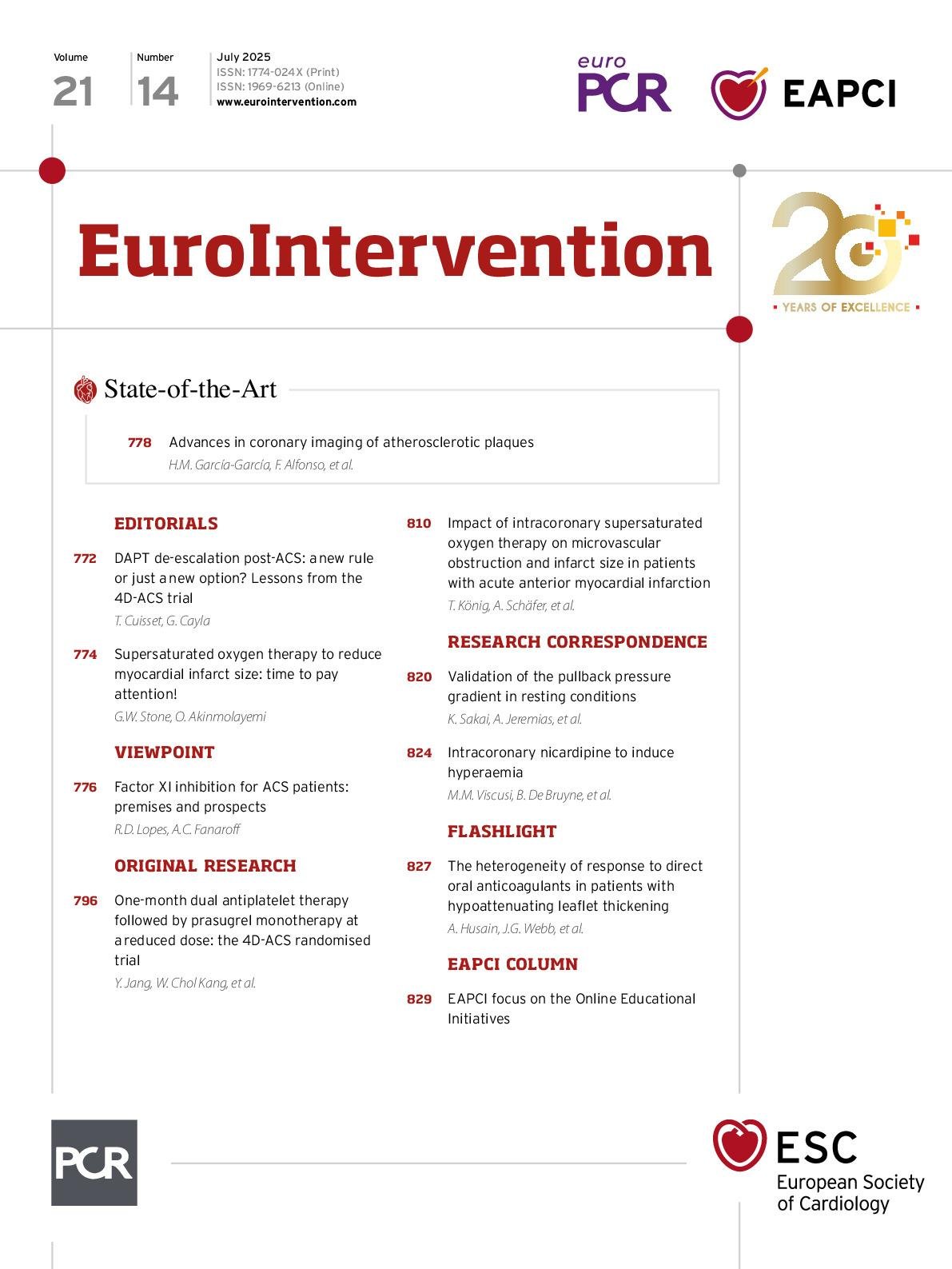Abstract
Background: Final infarct size (FIS) and microvascular obstruction (MVO) are associated with heart failure hospitalisations and mortality in patients with acute myocardial infarction (AMI). Interventions beyond primary percutaneous coronary intervention (PCI) to reduce FIS are needed. Supersaturated oxygen (SSO2) therapy demonstrated reduced FIS in clinical trials.
Aims: We aimed to investigate whether routine use of SSO2 reduces FIS and MVO in clinical practice.
Methods: Intracoronary SSO2 was delivered for 60 minutes after successful primary PCI in patients with anterior AMI. Results from 20 SSO2 patients were compared with those from 20 similar non-SSO2 AMI patients. Multimodal imaging including single-photon emission computed tomography (SPECT), fibroblast activation protein inhibitor positron emission tomography (FAPI-PET), and cardiac magnetic resonance imaging (CMR) was performed to assess left ventricular function, FIS, area at risk, extent of myocardial fibroblast activation, myocardial salvage, and MVO.
Results: The two groups did not significantly differ regarding sex, age, weight, hypertension, dyslipidaemia, smoking and diabetes status, prehospital cardiac arrest, door-to-balloon time, Thrombolysis in Myocardial Infarction flow before and after PCI, or renal function (p>0.1 for each) and had comparable area at risk by CMR and FAPI-PET. SSO2 patients showed lower FIS determined by CMR (SSO2: 20% vs non-SSO2: 32%; p<0.001) and SPECT (SSO2: 16% vs non-SSO2: 29%; p=0.014). Myocardial salvage was higher in SSO2 patients (50% vs 28%; p=0.002). MVO occurred less often and was less extreme under SSO2 therapy.
Conclusions: SSO2 therapy was associated with significantly reduced microvascular obstruction and FIS in patients with anterior AMI in clinical routine practice.
Sign up for free!
Join us for free and access thousands of articles from EuroIntervention, as well as presentations, videos, cases from PCRonline.com

